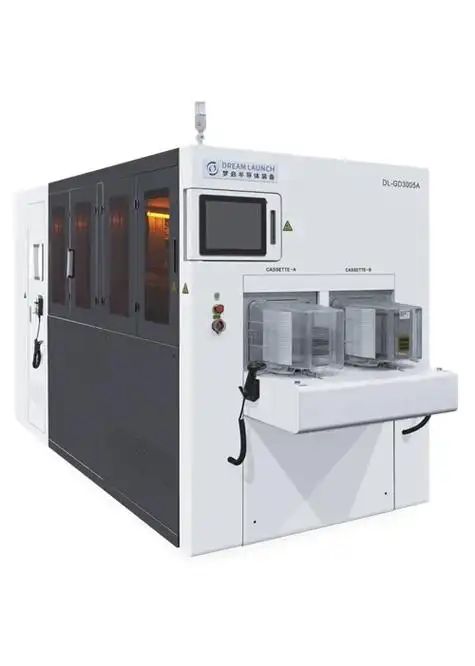Si Wafer Thinning Equipment Market: Precision Drives Silicon’s Future in 2025
Sunday,30 Mar,2025

The Si Wafer Thinning Equipment Market is accelerating in 2025, propelled by a relentless push for thinner silicon wafers that power the chips driving our connected world—think smartphones, electric vehicles (EVs), and 5G networks. These machines, crucial for reducing wafer thickness to below 50 microns, are the unsung heroes of semiconductor fabrication, with the market valued at approximately $725 million in 2023 and projected to reach $1.6 billion by 2032 at a CAGR of 9.2%. Breakthroughs in thinning technology, from diamond grinding to automated systems, are turbocharging this growth, meeting the precision demands of a tech-driven era. Yet, as it speeds ahead, the market faces bumps—rising silicon costs, green regulations, and supply chain woes threaten to slow its roll, making it a space ripe for innovation and contention.
What fuels this market’s engine is its role in enabling chip miniaturization. Silicon wafers remain the bedrock of integrated circuits (ICs), with global shipments hitting 3,704 million square inches in Q2 2022—a 5% year-over-year leap. The Si Wafer Thinning Equipment Market dominates in Asia Pacific, where China, Japan, and South Korea produce over 60% of global chips, though North America keeps pace with its focus on AI and EV applications.
Thinning technology is the beating pulse of this market’s evolution, with 2025 unveiling leaps that redefine silicon wafer processing. Diamond grinding wheels, now 20% more precise than traditional abrasives, achieve surface finishes below 1 nanometer—essential for 3nm nodes and 5G chips. Automated systems with IoT and AI integration boost throughput by 15%, enabling real-time tweaks in high-volume fabs. Eco-friendly advancements—like water-based coolants and energy-efficient motors—slash power use by 10%, aligning with sustainability goals like the EU’s net-zero push, positioning the Si Wafer Thinning Equipment Market as a leader in green manufacturing.
But these strides aren’t frictionless. The steep cost of cutting-edge thinning technology—sometimes doubling equipment prices—tilts the field toward big players, raising questions about market fairness. Scaling eco-friendly solutions lags, too, as diamond wheel supply chains buckle under demand. This tension could ignite debates: Is the Si Wafer Thinning Equipment Market carving a sustainable path, or deepening an elite divide? Expect this push-pull to ripple through industry forums and social media as stakeholders weigh innovation against inclusion.
The Si Wafer Thinning Equipment Market is a hotbed of trending issues primed for engagement. The 5G rollout—linking 2.5 billion devices by 2024—drives demand for ultra-thin silicon wafers, but semiconductor shortages strain supply chains, a topic buzzing online. Sustainability is a flashpoint—regulatory pressures demand lower emissions, yet thinning’s energy intensity (up to 50 kWh per batch) clashes with green goals, pushing for recyclable abrasives. Automation’s rise promises efficiency but threatens jobs in labor-rich regions like Southeast Asia, fueling ethical debates that could shape policy.
Industry pain points hit hard. Silicon price volatility—up 8% in 2024—squeezes margins, while a skilled technician shortage (down 12% in the U.S. since 2022) slows adoption of high-tech gear. Potential tariffs on imports could spike costs further, a frustration echoed in online posts about delayed shipments. These dynamics position the Si Wafer Thinning Equipment Market as a crucible for 2025, blending practical hurdles with big-picture questions that could dominate trade talks and digital discourse.
The Si Wafer Thinning Equipment Market is at a pivotal edge, with its future tied to precision and pragmatism. Scaling thinning technology—think affordable automation and green abrasives—could unlock growth in emerging hubs like India, where chip demand rose 10% in 2024. Topics like AI-driven optimization, sustainable supply chains, and workforce reskilling could fuel hot articles and policy shifts. In my view, the market’s strength lies in democratizing precision—its promise risks dulling if it serves only the deep-pocketed few.
This isn’t just about thinning wafers—it’s about thinning the barriers to tech’s future. The Si Wafer Thinning Equipment Market in 2025 is set to power the chips that connect our world, but it must navigate a rough terrain of costs and conscience. As it hones its craft, expect this sector to keep the industry humming with ideas and arguments.
FAQS
Q1: What’s driving the Si Wafer Thinning Equipment Market in 2025?
A1: Growth is spurred by demand for ultra-thin silicon wafers in 5G, EVs, and consumer electronics, powered by advancements in thinning technology.
Q2: How does thinning technology influence this market?
A2: Diamond wheels and automation enhance precision and efficiency, though high costs can limit access for smaller manufacturers.
Q3: What challenges do manufacturers face in this market?
A3: Silicon price swings, technician shortages, and supply chain delays raise costs and hinder adoption.
Q4: Are there controversial trends shaping the market?
A4: Yes, sustainability mandates and automation’s job impact could spark debates over eco-benefits versus employment.
Q5: What future topics might drive engagement?
A5: AI optimization, green manufacturing, and supply chain resilience could dominate industry and policy conversations.

